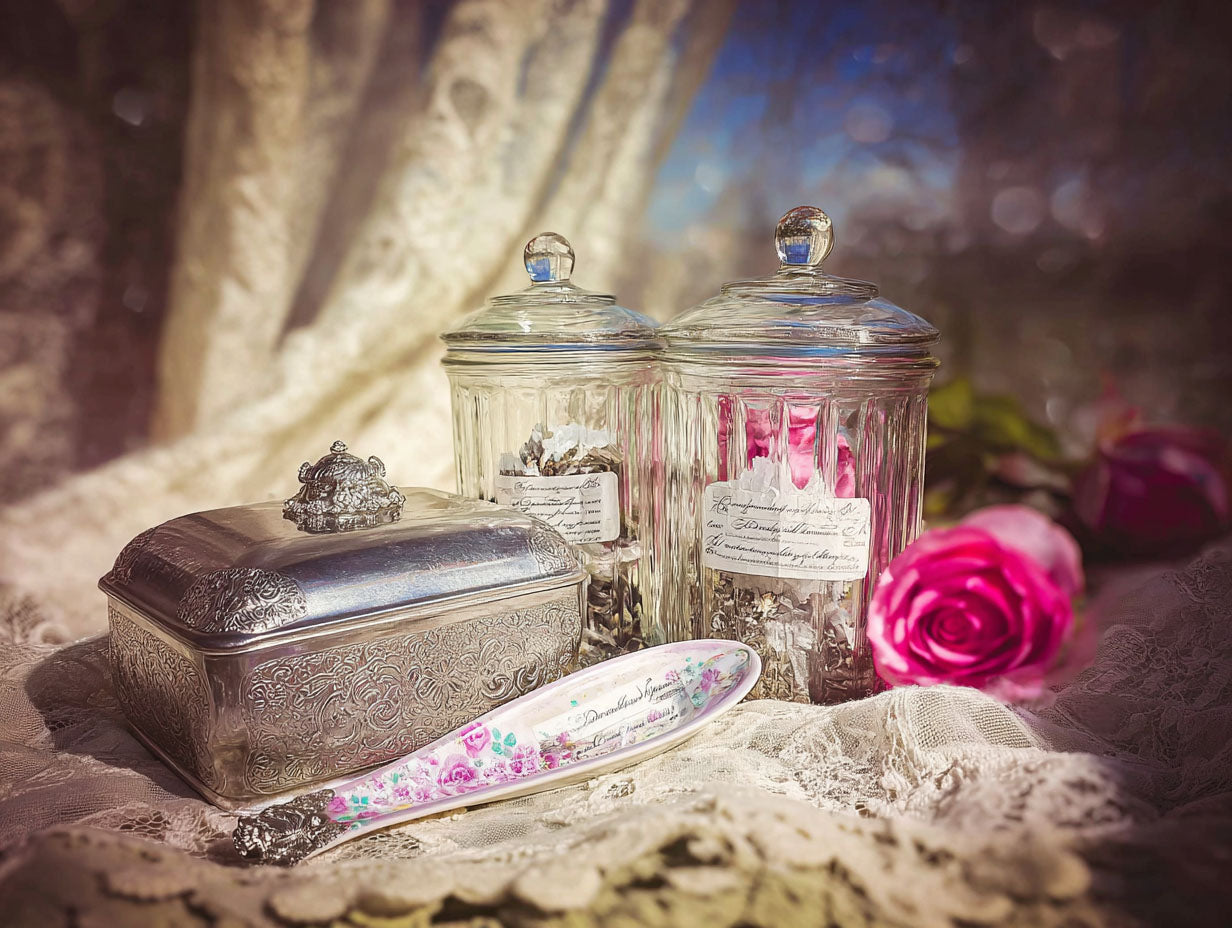
How to Store Tea and Keep It Fresh
Pray, sit a while, dear friend, and let me tell you of a small scandal from the village. Only last week, Mrs. Pembroke confided that her prized tin of London Breakfast had "gone quite dull." Upon investigation, it transpired that she had left it upon the windowsill, where the afternoon sun poured down unkindly. Such a fate for so noble a tea! It reminded me how often we speak of brewing, yet forget the quiet art of storage--that hidden interval between purchase and pouring, where tea's fate is sealed.
Let us, then, take a moment to consider how best to guard our beloved leaves, ensuring each cup sings as brightly as the first.
why storage matters
Tea is delicate--not fragile, but easily persuaded by its surroundings. Light, air, moisture, and odour are its constant suitors, and if permitted, they steal away its fragrance. Just as Clara insists upon keeping roses in cool water lest they droop before supper, so must we keep our teas properly if we wish them to remain lively and aromatic.
A well-stored tea not only rewards the senses but also respects the craft of those who cultivated and blended it. Imagine, after all, the care with which Peach Blush is composed, or the precision with which Morning Tea is plucked--it would be ungracious indeed to let them fade in a careless cupboard.
the four enemies of tea
1. Light
Sunlight bleaches leaves, dulling both hue and taste. Always keep tea in an opaque container, far from the reach of bright windows. Crystal jars may look charming, but they are better suited to sugared almonds.
2. Air
Exposure to air allows oxidation to continue, leaving leaves lifeless. A tightly sealed container is essential--the less air, the fresher the flavour.
3. Moisture
Tea is as absorbent as muslin left in a rain shower. A single drop of dampness can ruin an entire tin. Store your leaves in a dry place, away from steam, kettles, or the bustle of the stove.
4. Odour
Tea is a quiet mimic. Place it near spices, soaps, or onions, and it will borrow their company--much to its own detriment. Keep it apart, in a vessel reserved solely for tea.
the best vessels for storage
Clara swears by tins, and in this case I am entirely of her opinion. A good tea tin, opaque and snug of lid, shields leaves from every foe. Glass jars, while charming, do little to protect against light. Pouches are useful, but once opened, they should be folded tightly and placed within a firmer container.
At High Tea with Harriet, we offer both boxes and tins; the latter, though more costly, prove themselves faithful guardians of freshness. Think of a tin not as expense, but as an heirloom--a companion that may be refilled for years to come.
room to breathe--or not?
One question often asked is whether tea needs "room to breathe." The answer, dear friend, is no. Unlike wine, tea does not improve once blended. It is best sealed tightly, away from intrusion, until it meets your teapot.
placement in the home
Avoid the kitchen windowsill (Mrs. Pembroke's downfall), the cupboard above the stove, or any place touched by heat and steam. A cool, dark pantry or cupboard is best. Clara, ever practical, keeps hers in a wooden drawer lined with paper--and I must admit, it is as orderly as it is effective.
a reflection on sustainability
Clara reminds me that tins are not only practical but enduring. One may refill them time after time, lessening waste. Pouches, too, are becoming lighter, designed with care for both tea and planet. I like to think that in choosing our vessels wisely, we do honour not just to the leaf but to the earth that nurtures it.
in closing
So, dear friend, remember this: to store tea well is to preserve not only flavour but memory. Each cup poured fresh is a tribute to garden, grower, and guest alike. Guard your leaves from light, air, moisture, and odour, and they shall reward you with fragrance as true on the hundredth day as on the first.
Ever yours, with a teacup in hand,
Lady Harriet